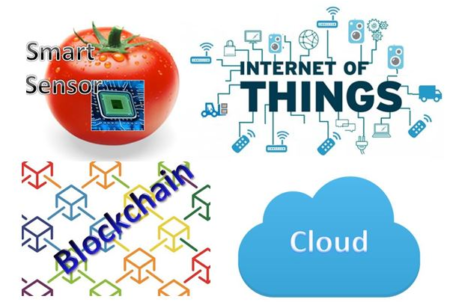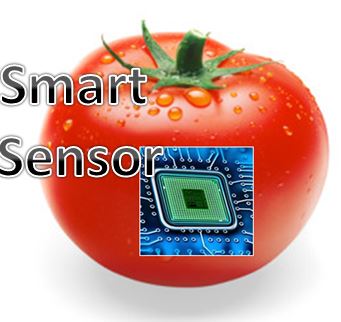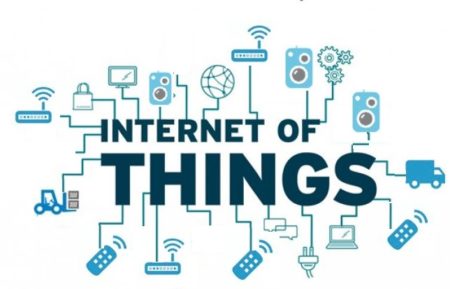Smart Sensors, the Internet-of-Things, Blockchain and the Cloud the perfect combination for food safety-Introduction
 A number of exciting new technologies are combining together to make tracing of food safety better. They include the combination of “smart” sensors transmitting their data into the Internet-of-Things (IoT). The information is made secure through Blockchain. The massive amount of data generated by the process resides in the cloud. While most of these technologies are in their infancy, significant strides are made to make them a reality.
A number of exciting new technologies are combining together to make tracing of food safety better. They include the combination of “smart” sensors transmitting their data into the Internet-of-Things (IoT). The information is made secure through Blockchain. The massive amount of data generated by the process resides in the cloud. While most of these technologies are in their infancy, significant strides are made to make them a reality.
Smart Sensors
Definition
Advancement in technology and automation brought us smart sensors that become more prevalent now. A smart sensor is a device or instrument that takes input from the physical environment and uses built-in compute resources to perform predefined functions upon detection of specific input and then process data before passing it on.
Typically a smart sensor is the combination of a sensing element with processing capabilities provided by a microprocessor. The signal from the sensor is fed into a microprocessor that processes the data and provides an informative output to an external user.
Types of Sensors
The measures time-temperature during the shipping of produce, providing time and date stamps, and temperature data points, transmitted via Bluetooth. This allows the food company to have instant access to temperature data from anywhere, and alerts are sent immediately if the temperature is out of spec. This allows taking corrective action fast before the problem escalates. The processor also maintains all of its data digitally
FreshSurety records and reports location, temperature, and freshness every ten minutes from the time a pallet is assembled in the field to the time it’s broken down at the retailer.
The low-cost disposable sensor measures temperature, moisture and metabolite and reports the data through to the internet through wireless communications. The information provided by the sensor is used to assess the freshness and shelf-life, at the carton level, to allow the purchasing agent to make logical purchasing decisions.
There are many other sensors for food safety and quality (http://www.mdpi.com/books/pdfview/book/200 ) including sensors that act as an electronic nose for fruit ripeness, biosensors for pathogen detection, to name a few. We will dedicate a special Blog to these sensors.
Internet-of-Things (IoT)
Definition
IoT is a system of interrelated computing devices or sensors, mechanical and digital, that are capable to gather and transfer data over a network without requiring human-to-human or human-to-computer interaction. The devices are typically embedded with electronic, and software with connectivity and automated data exchange. As the Internet connects people, the IoT connects things.
IoT allows the various devices the ability to monitor, interact and communicate with each other. Each “Thing” is a miniaturized sensor, with a microprocessor able to send and receive messages wirelessly. A separate blog will be devoted to IoT
Block Chain
Definition
Blockchain – is a decentralized, shared log of data maintained on a network of computers, rather than a physical ledger. It is a digital ledger of records that are organized in chunks of data called blocks.
The blocks are then linked with one another through a cryptographic (secure communications) validation. The linked blocks form an unbroken chain — a blockchain. It gives the network participants the ability to share ledger data. Each participant on the network can act as publisher and subscriber.
The main innovation of Blockchain is that it keeps all data in a sequence of “blocks,” which are spread over a computer network of nodes. It is impossible for any user to change or remove data because: (i) There is no central authority; (ii) because copies of the ledger are stored on every node. Whatever is put on the blockchain is cast in stone.
The main features of blockchain network include the ability of participants on each node to know where the products came from and how ownership changed over time. The blockchain provides a single place to determine the movement of goods.
In the past, we have discussed Blockchain and its use in food safety.
How do blockchain and IoT fit together?
IoT allows creating a network of sophisticated smart devices or sensors. Data is the main component generated by the IoT. In order to function, an IoT network is required to send and receive large amounts of data; some of it is sensitive data. Blockchain has the potential to significantly increase both the security and level of automation of data transactions. It is a powerful way to get decentralized security and trust to smart sensors on the IoT by recording the data on the blockchain.
 <
<
Where does the cloud fit?
The cloud is a giant platform to store data. The data enters the cloud through the network; it is processed (doing the required calculations) and either returned to the user or stored on the cloud until it is further needed.
Summary
It seems that food safety is facing a revolution in the coming years, taking advantage of technological achievements that are currently being developed for numerous industrial and personal applications, including various food commercial fields. Ask-bioexpert will follow this revolution as it develops and points out the challenges relating specifically to food safety.
Next Blogs
We will devote a number of blogs to discuss the various elements of the system, including the various smart sensors available for food safety, their utilization with IOT and blockchain.
